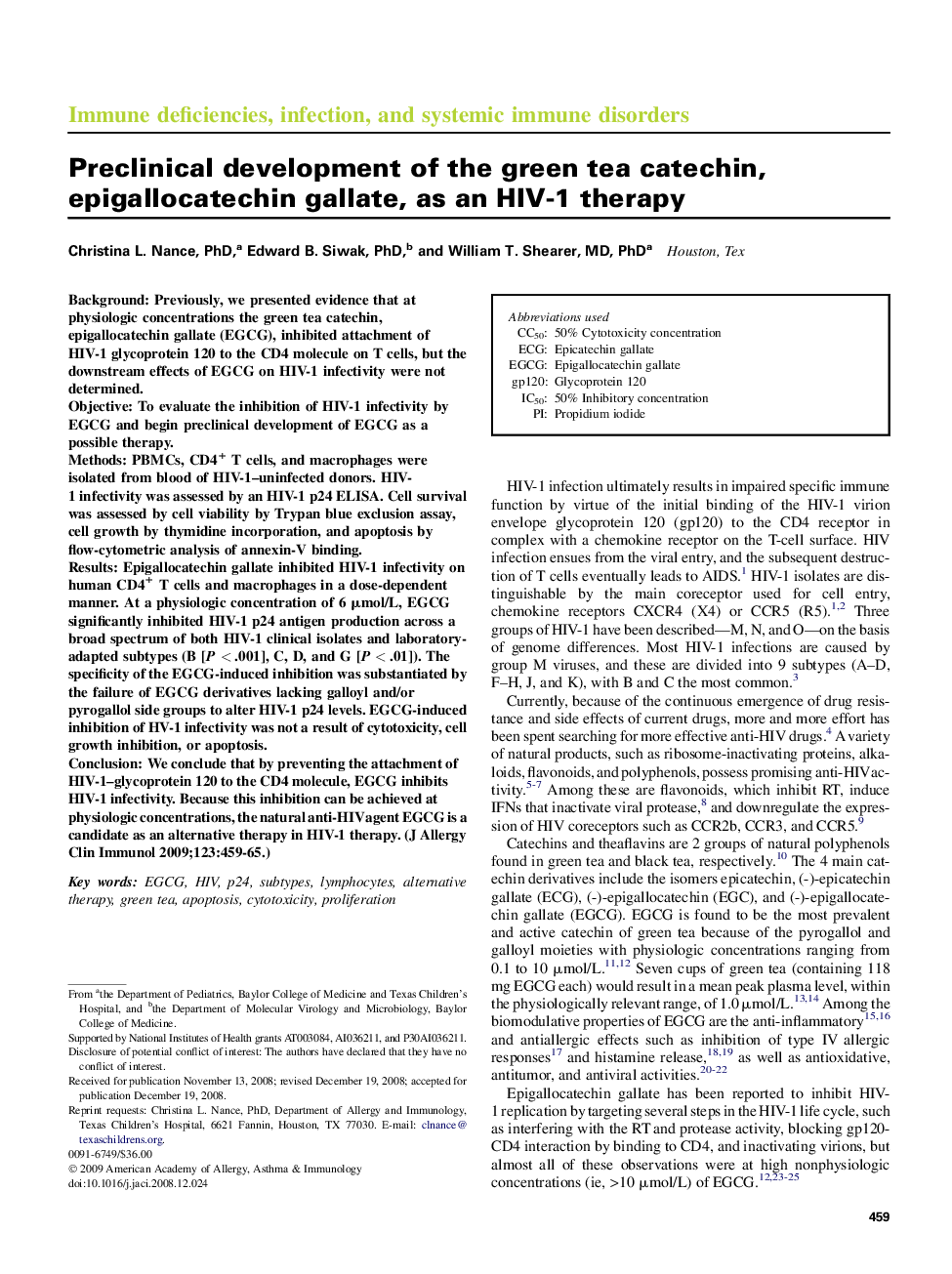| کد مقاله | کد نشریه | سال انتشار | مقاله انگلیسی | نسخه تمام متن |
|---|---|---|---|---|
| 3200888 | 1201945 | 2009 | 7 صفحه PDF | دانلود رایگان |

BackgroundPreviously, we presented evidence that at physiologic concentrations the green tea catechin, epigallocatechin gallate (EGCG), inhibited attachment of HIV-1 glycoprotein 120 to the CD4 molecule on T cells, but the downstream effects of EGCG on HIV-1 infectivity were not determined.ObjectiveTo evaluate the inhibition of HIV-1 infectivity by EGCG and begin preclinical development of EGCG as a possible therapy.MethodsPBMCs, CD4+ T cells, and macrophages were isolated from blood of HIV-1–uninfected donors. HIV-1 infectivity was assessed by an HIV-1 p24 ELISA. Cell survival was assessed by cell viability by Trypan blue exclusion assay, cell growth by thymidine incorporation, and apoptosis by flow-cytometric analysis of annexin-V binding.ResultsEpigallocatechin gallate inhibited HIV-1 infectivity on human CD4+ T cells and macrophages in a dose-dependent manner. At a physiologic concentration of 6 μmol/L, EGCG significantly inhibited HIV-1 p24 antigen production across a broad spectrum of both HIV-1 clinical isolates and laboratory-adapted subtypes (B [P < .001], C, D, and G [P < .01]). The specificity of the EGCG-induced inhibition was substantiated by the failure of EGCG derivatives lacking galloyl and/or pyrogallol side groups to alter HIV-1 p24 levels. EGCG-induced inhibition of HV-1 infectivity was not a result of cytotoxicity, cell growth inhibition, or apoptosis.ConclusionWe conclude that by preventing the attachment of HIV-1–glycoprotein 120 to the CD4 molecule, EGCG inhibits HIV-1 infectivity. Because this inhibition can be achieved at physiologic concentrations, the natural anti-HIV agent EGCG is a candidate as an alternative therapy in HIV-1 therapy.
Journal: Journal of Allergy and Clinical Immunology - Volume 123, Issue 2, February 2009, Pages 459–465